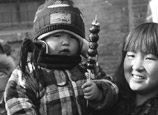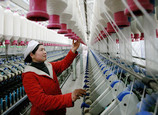
Government figures
According to the NBS, China's Gini coefficient reached its highest level in 2008, standing at 0.491, but began to drop after that. In 2012, the coefficient reached 0.474.
Ma says that to calculate the Gini coefficient, China previously only had figures related to the per-capita net income of rural residents and the per-capita disposable earnings of those in urban areas, but no information based on comparable indicators.
Thus, for the past two years, the NBS has made reforms to the statistical system on resident income. As of December 2012, 400,000 households in both urban and rural areas are incorporated into a new scheme by which salaries are registered in uniform comparable standards. Accordingly, household earning figures have been recalculated to yield China's Gini coefficient from 2003 to 2011.
According to Ma, after the 2008 global financial crisis, local governments at various levels adopted powerful measures to improve people's livelihood, which serves as the major reason for the drop in the country's Gini coefficient from 0.491.
Anticipating that the figures might cause dispute, Ma emphasizes that World Bank and NBS figures correlate, with the latter's information even a bit higher. He adds that the Gini coefficient figures from 2003 to 2012 were calculated in accordance with new standards, but based on old statistics, making further revision likely.


















 Most feared Spring Festival questions
Most feared Spring Festival questions


![]()
